This set is also available on CD for those interested.
The Doors’ Live at The Matrix, 1967: The Original Masters Finally Inhabits Comprehensive 5LP+7In Deluxe Edition Box Set Mastered by Bruce Botnick and Bernie Grundman
The new Live at The Matrix, 1967: The Original Masters super deluxe box set that features early live recordings by The Doors as captured on the cusp of their impending, immense fame is a wonderful historic document on vinyl — and a crucial crossroads moment. Issued for the first time in as complete form as possible — and from better sources than what’s been previously available — these semi-professional recordings give us a glimpse of this legendary L.A. band just before they broke out as international music sensations.
Before we dive into the pros and cons of traversing this literal musical matrix, the official press release from The Doors camp offers some details on how this set was created — and we quote: “Today, [Peter] Abram’s original recordings have been remastered by Bruce Botnick, The Doors’ longtime engineer/mixer, for official release. The vinyl version of LIVE AT THE MATRIX, 1967: THE ORIGINAL MASTERS includes all 37 songs from the shows sourced from the master tapes. Except for 15 songs released in 2017 and 2018 as Record Store Day exclusives, most of the newly upgraded live recordings are making their debut in the collection, including eight that have never been featured on any of the previous Matrix releases.”

While there is no formal information given, it stands to reason that the lacquers for this new box set were ultimately cut from the digital remaster of the best available tapes (and by Bernie Grundman). The analog tapes were likely transferred over to a digital workstation like ProTools to enable Botnick to work his considerable mastering magic.
How these tapes came to be — and how The Doors organization obtained them — have their own sordid history, which is detailed in acclaimed music journalist Joel Selvin’s fine liner notes included in the box set. In short, although it was the co-founder of The Matrix — the aforementioned Peter Abram — who recorded those Doors sets at his club, eventually, many of those tapes got into less-than-reputable hands, costing the band and its team considerable expense along the way to obtain the best possible master(s).
The LPs in this box set are pressed on high-quality standard-weight black vinyl that is happily quiet and well-centered. Each LP comes housed in its own audiophile-grade plastic-lined black-paper inner sleeve. The SRP for The Doors’ Live at The Matrix, 1967: The Original Masters is $124.99.
Before I dive deeper into the review, I do want to share some important background about The Matrix club first.
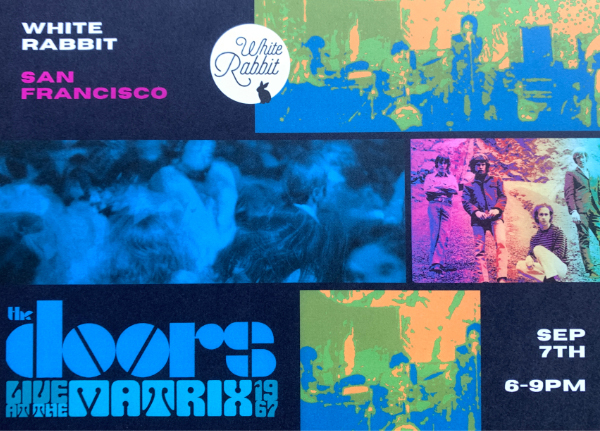
Entering The Matrix
The Matrix was an important San Francisco club among musicians and those in the know. Earlier this month, I was invited to a release party for Live at The Matrix, 1967 that was held in the actual space where the club originally existed — a locale that is now a stylish cocktail lounge appropriately named White Rabbit. At this event, Joel Selvin (below) spoke, helping put the venue and The Doors’ own moment in time there into perspective from his own firsthand experience — as he had been to numerous shows at the venue back in the day himself.
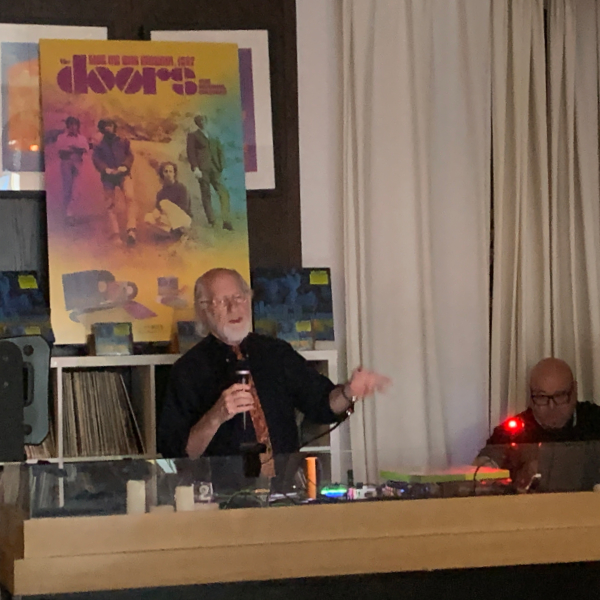
Started in 1965 by Jefferson Airplane vocalist Marty Balin, The Matrix was effectively a transformed pizza parlor-turned-rock venue where his then still young new band could play regularly to hone its sound. No doubt overshadowed by larger San Francisco venues like The Fillmore and the Avalon Ballroom, The Matrix became the chill spot where local and touring bands could perform with less pressure, often trying out new ideas in an intimate, not-so-formal environment. Apparently, most everyone on the San Francisco music scene of the times played there at one time or another.
Many unofficial tapes document all that went on there, and collectors have been trading these recordings for decades. Today, you can easily find many legendary shows from The Matrix simply by scouring the interwebs to find early sets from The Grateful Dead, David and The Dorks (a.k.a. David Crosby with members of The Grateful Dead), The Butterfield Blues Band, and The Blues Project, to name a few, as well as the Tuesday night jams with the movers and shakers of the SF music scene. Even The Velvet Underground played there in 1969 (and those tapes were officially released in full in 2015 as The Complete Matrix Tapes), and a then relatively unknown Bruce Springsteen brought his pre-E Street Band Steel Mill to the venue too.
Peter Abram — Marty Balin’s partner in running The Matrix — recorded most of the shows there on his Akai reel-to-reel machine through the club’s soundboard. And while Abram certainly had good intentions, he wasn’t really an engineer, so the results are often mixed. But Abram did do the yeoman’s work to document the music that was happening in the moment — which is beyond invaluable to many of us from a historical perspective.
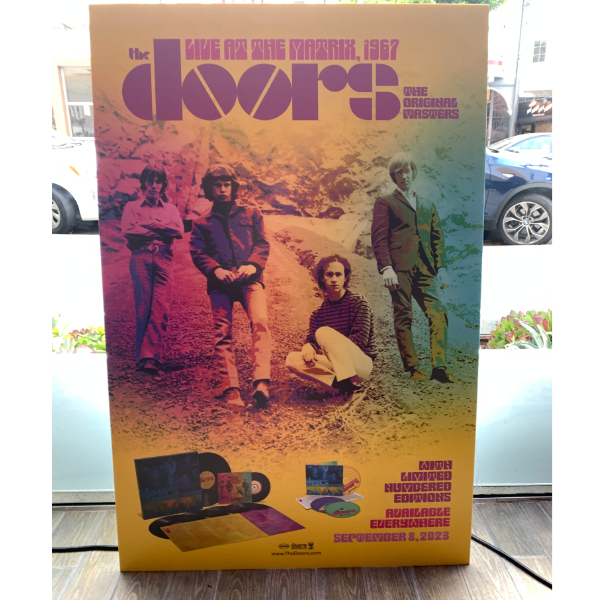
Opening The Doors of Perception
At the time of these live recordings — which took place during the band’s multiple sets at The Matrix on March 7, 8, 9, and 10, 1967 — The Doors’ eponymous first album had already been released in January 1967 on Elektra, but had yet to make its impact. Effectively, The Doors were still basically an unknown group from L.A. trying to break on through (if you’ll pardon the irresistible bad pun) wherever they could — and, as it t turns out, San Francisco was one of the only cities where The Doors were getting any radio play, so they would visit the city regularly to nurture that audience. Steadily making connections with San Francisco’s growing hippie community, during one of their appearances, the band was offered a quasi-residency for several nights at the off-the-beaten-track Matrix. They stayed over, and basically played for whomever might show up.
The Doors’ Live at The Matrix, 1967 performances are indeed fascinating, often exemplary, exploratory, and certainly embryonic. Despite the band making strong inroads at larger venues, when you listen to these particular Doors tapes from The Matrix, it sounds at times that at best, maybe 20 people were in the room. (The space could hold about 125 back in the day.)
It is interesting to note how musically novice audiences could be at that time. For example, when The Doors finish a tune many 20th century music fans today know as a staple of rock & roll’s literal DNA — Bo Diddley’s 1956 classic shoulda-been-a-hit “Who Do You Love?” — there is barely a peep of applause, leading us to wonder if Bo Diddley wasn’t yet on that audience’s radar at the time. Within a couple of years, bands like Quicksilver Messenger Service — who also played extended jam versions of “Who Do You Love?” in their early sets — would eventually dedicate an entire album side to a 25-minute “Suite” version of the song on March 1969’s excellent Happy Trails album, on Capitol. At least for the audiences at these Doors shows at The Matrix, they didn’t seem to get — or get off on — this fine Bo Diddley cover.
It also helps to consider that the moment in time captured on Live at The Matrix, 1967 was just before a literal pop music explosion. Cream’s first LP, Fresh Cream, had only been out for a few months after being issued by Reaction in December 1966, and the Jimi Hendrix Experience was still a few months away from releasing their own debut album Are You Experienced? in May on Reprise — an album that would rip a musical revolution through the music world, following their groundbreaking “Hey Joe” single, which was released in December 1966. (Hendrix’s gamechanging performance at The Monterey International Pop Festival would not occur until that June.) While the big bang of the January 1967 Human Be-In in San Francisco showed that the times were again a-changin’, musically, the sounds of those times were still evolving as the psychedelic movement continued to find its voice, and its audience. New bands were emerging everywhere.
These special moments all contribute to making Live at The Matrix, 1967 all the more fascinating and important, as it showcases The Doors as the nascent struggling young band they were. Let’s get deeper inside this box set’s music, shall we?
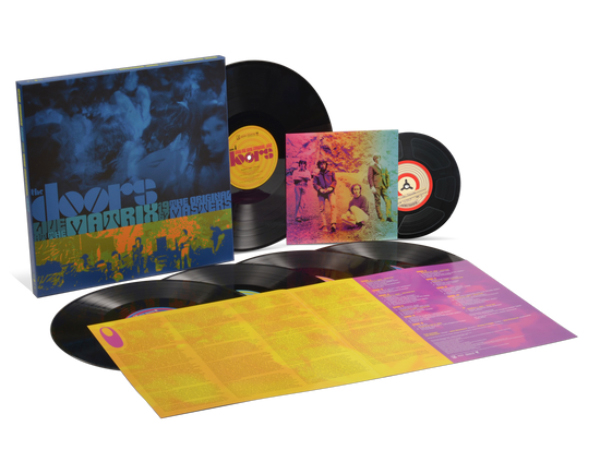
Experiencing The Matrix on Vinyl
Now that your musical appetite has been whetted a bit, you are probably wondering whether you really need to own Live at The Matrix, 1967: The Original Masters, something that will come down to your listening and collecting priorities, and the type of recordings you prefer.
Of course, you can see from our numerical rating at the top of this review that the sound on this collection is not up to our usual standard for audiophile-leaning music enthusiasts. That is not to say Live at The Matrix, 1967 sounds bad — in fact, it actually sounds quite good for what it is. But if you are looking for a precise, professionally engineered, mixed, and mastered live recording akin to The Allman Brothers Band’s seminal At Fillmore East, you’ll be sorely disappointed by the sound quality here.
That said, let’s not forget Live at The Matrix, 1967 was recorded on two-channel stereo 7- and 1/2-inch reel-to-reel tape, with no opportunity for breaking out individual instruments for remixing. The mix is what it is — moments captured in real time.
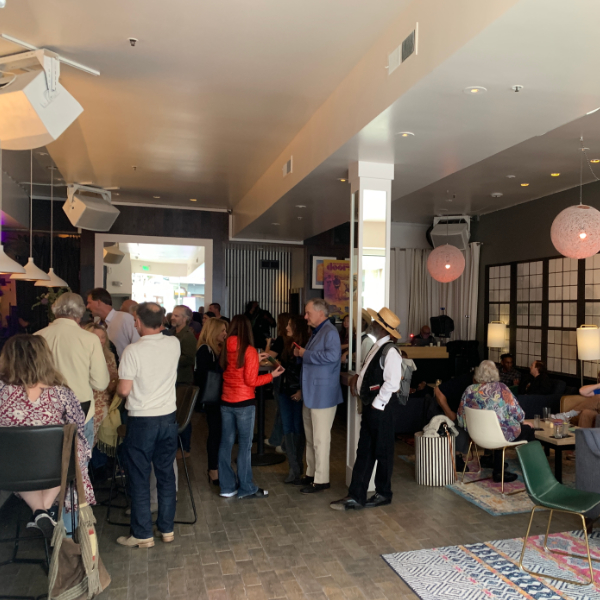
To better appreciate this live recording, we also need to consider the acoustics of the room that was The Matrix. At the aforementioned release party at White Rabbit, even the DJ there commented that the distinctive sound heard on these recordings reflects the way the room still sounds today, 56-plus years later. (That DJ played Live at The Matrix, 1967 from vinyl that night.) As you can see from my photo above, this is a long, rectangular, concrete brick-and-mortar-type building. I suspect that, in 1967, small club owners weren’t yet paying a lot of attention to room acoustics — it was just a “set up and play” scenario, for the most part.
Getting into the recording specifics here, there is no doubt The Doors’ instruments were miked individually as there is a stereo soundstage present throughout, but the sound we ultimately hear on these LPs is often quite ambient in nature. It’s almost as if there were a handful of microphones set up near the space where the band was playing, but not quite directly on the instruments and amplifiers (something that’s a more common recording technique these days). Assuming this small venue had a modest mixing board, I would guess it would consist of, at best, four channels — effectively, one microphone/channel for each bandmember. So, I suspect part of the sound we’re getting here is that of the individual players’ instruments and voices bleeding over into each other’s soundfield (if you will) through their microphones, blended together through the soundboard.
Taken in this light, these live recordings sound pretty good, all things considered — but it’s a sonic texture that is not as dynamic and rich as one might hope or prefer. These tapes deliver a curious blend of clarity, ambiance, and a particular boxy flatness.
All that said, if you are going to dive in and enjoy Live at The Matrix, 1967, you have to be able to appreciate the sound of this sort of raw, simple sonic snapshot document made in the moment. As I’ve mentioned before, it is one of those “it is what it is”-type scenarios.
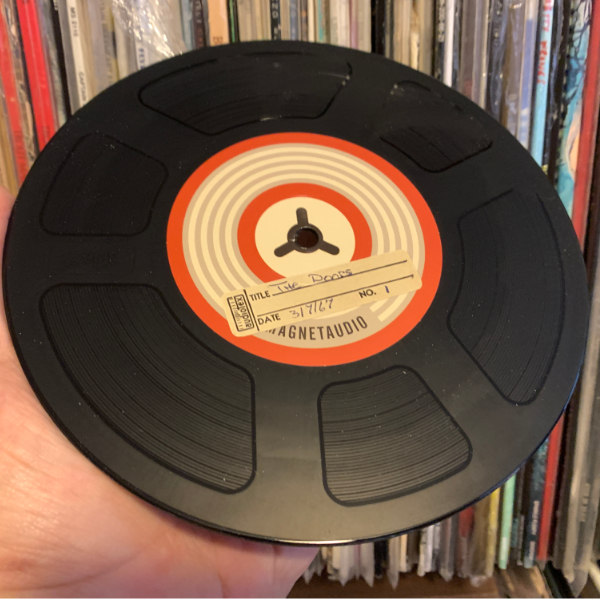
Hey, It’s All About the Music, Man
The Doors’ performances are super-interesting on Live at The Matrix, 1967. You can hear the band experimenting, stretching out arrangements, and trying new ideas. They dive into blues and jazz, including instrumental versions of George Gershwin’s “Summertime” (Track 2, Side 10 [LP 5)), Miles Davis’ “All Blues” (Track 4, Side 1 [LP 1]), and Milt Jackson’s “Bags Groove.” Note that the latter track is included in the box set as part of a bonus, one-sided 7in Single featuring a neat reproduction of the original 7in tape reel on the non-playable B-side.
They were playing jazz, yet it sounds like The Doors. This connects some dots to the undercurrent jazz/blues feel running through much of the band’s music over the course of their all-too-brief career. It was there all the time, and some of the earliest evidence of it is laid out clearly for us to hear here on Live at The Matrix, 1967.
Some other favorite moments happen on Side 5 (Side 1 of LP 3), which features the March 7, 1967 third set version of the “Woman Is A Devil / Rock Me Baby” medley, After a sweet “Break on Through (to the Other Side)” (Track 2), The Doors ease into a moody version of the tune that in short order would make them a household name, the eventual No. 1 single “Light My Fire” (Track 3). And if you listen closely during the solo sections, you can essentially hear Jim Morrison doing his thing in the room, clapping along periodically and yelping off-mike, seemingly searching for what would soon become his trademark screams. Guitarist Robby Krieger’s solo here is also pretty epic, with nice moments of controlled feedback swells. (Hendrix wasn’t the only guitarist working with feedback at that time.)
You can also hear the germs of Morrison’s wild stage persona emerging on these recordings, especially on Side 6 (Side 2 of LP 3), which is dedicated entirely to “The End.” There are two versions of that song offered on this Side — one being the set closer from March 7, and the other being a partial take (listed as being from either “March 8 or 9”) that includes a the-title-says-it-all moment called “Let’s Feed Ice Cream to the Rats.”
Another amazing moment is hearing the band do Bertold Brecht and Kurt Weill’s creepy drinking classic “Alabama Song (Whisky Bar)” (Side 10, Track 4 [LP 5]), complete with an additional verse not found on the studio version that appears on The Doors.
The fact is, The Doors Live at The Matrix, 1967: The Original Masters is a very cool release. As to whether certain audiophiles amongst us need it in their collection depends on how much they are into The Doors and the sound of informal archival recordings made in an iconic pizza parlor-turned-psychedelic playhouse club. As the saying goes, your mileage may vary — but the inherent value of Live at The Matrix, 1967 cannot be denied.
(Mark Smotroff is an avid vinyl collector who has also worked in marketing communications for decades. He has reviewed music for AudiophileReview.com, among others, and you can see more of his impressive C.V. at LinkedIn.)

THE DOORS
LIVE AT THE MATRIX, 1967: THE ORIGINAL MASTERS
5LPs (Elektra/Rhino/Doors Music Co./Bright Midnight)
Side 1 (LP 1)
(March 7, 1967) First Set
1. Back Door Man
2. My Eyes Have Seen You *
3. Soul Kitchen
4. All Blues – Instrumental *
Side 2 (LP 1)
1. Get Out Of My Life Woman **
2. When The Music’s Over *
Side 3 (LP 2)
(March 7, 1967) Second Set
1. Close To You **
2. Crawling King Snake **
3. I Can’t See Your Face In My Mind
4. People Are Strange
5. Alabama Song (Whisky Bar)
Side 4 (LP 2)
1. Crystal Ship
2. Twentieth Century Fox
Third Set
3. Moonlight Drive
4. Summer’s Almost Gone *
5. Unhappy Girl
Side 5 (LP 3)
(March 7, 1967) Third Set
1. Woman Is A Devil / Rock Me Baby **
2. Break On Through (To The Other Side) **
3. Light My Fire
Side 6 (LP 3)
1. The End
2. The End (Partial) / Let’s Feed Ice Cream To The Rats (From March 8 or 9, 1967)
Side 7 (LP 4)
(March 10, 1967) First Set
1. My Eyes Have Seen You
2. Soul Kitchen **
3. I Can’t See Your Face In My Mind **
4. People Are Strange **
Side 8 (LP 4)
1. When The Music’s Over
Second Set
2. Money **
3. Who Do You Love **
Side 9 (LP 5)
(March 10, 1967) Second Set
1. Moonlight Drive *
2. Summer’s Almost Gone
3. I’m A King Bee **
4. Gloria **
Side 10 (LP 5)
1. Break On Through (To The Other Side) *
Third Set
2. Summertime – Instrumental **
3. Back Door Man **
4. Alabama Song (Whisky Bar) *
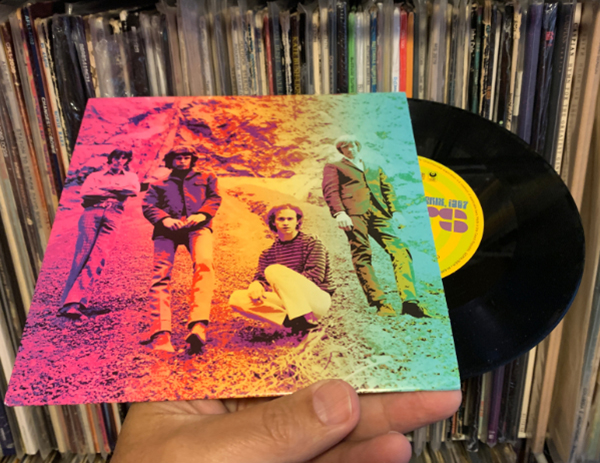
7in Single
March 7, 1967 (First Set)
1. Bag’s Groove – Instrumental *
* Previously Unreleased
** First Time Released From Original Master Tapes

- Log in or register to post comments


on Amazon of the CD ($28.58) and LP ($119.99) and the relatively primitive recording this seems like a no brainer.

But thank you for the 5 on SQ and the consistently EXCELLENT writing. That's what I believe it was going to be, 1st gen masters or not.
I really want it, but it doesn't follow my rule book of both performance and SQ, especially after listening to the Strange Nights of Stone release. There are spots where Jim yells really loudly into the mike and the resultant feedback, etc. means riding my volume for this entire set.
I wrestled with this for hours and hours and days and days... I'd rather just do the Qobuz or another means. It's just too much money and too much space on my already bulging racks.





